There’s an art to prepping your home for sale, and it’s called staging. Not to be confused with decorating, which is an expression of personal style, staging involves the de-characterization of all your spaces. It requires that everything be stripped down to its most neutral state so that potential buyers (no matter how different their tastes may be from yours) can imagine themselves living in what you once called home. Structural concerns aside, it’s a fairly straightforward process, but one that can seem daunting amidst the emotional and financial struggles inherent to any move. Here, we spoke with Compass’s Lauren Chao and Thijs van der Does and got their take on what to focus on when staging a room. From paint to clutter control, we’ve summed it all up into five actionable tips.

White walls brighten up the living area in this Brooklyn townhouse.
1. Painting Pays Off
“I always suggest repainting or a touch-up, if there’s any hint that the walls looks tired,” says Lauren. And this isn’t the time to channel your inner Matisse; opt for a clean white. Thijs also suggests repainting before trying to sell. “A fresh coat on your shutters, front door, and kitchen cabinets will go a long way,” he says.

Keep your countertops clear, not cold. Here, a simple bowl of fruit nods to the notion of home.
2. Details Make a Difference
“Whether it’s Turkish towels in the powder room or a Monstera leaf on a coffee table, it’s the little things that make a big difference,” Lauren notes. And though every room should feel white and bright, Thijs suggests a few colorful details here and there to help guide buyers’ eyes around a room. “An elegant bowl filled with fresh fruit on a clean kitchen counter is something everyone responds well to,” he says. And don’t skimp on a vase or two of seasonal flowers.
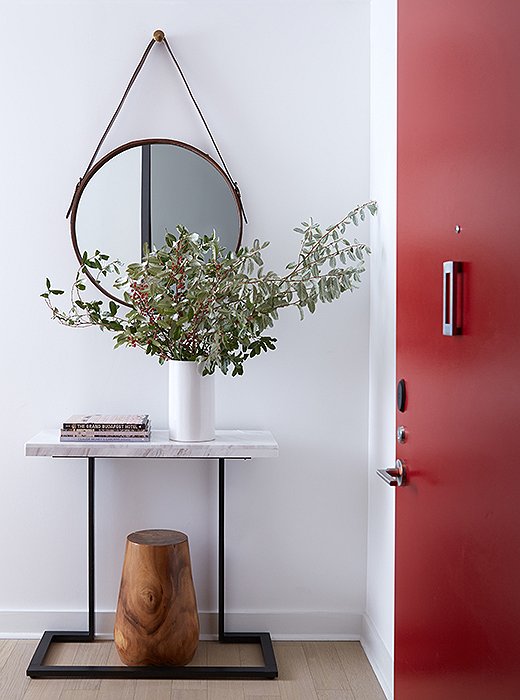
A mirror paired with a few eucalyptus branches makes a statement with mass appeal. Find a similar mirror here.
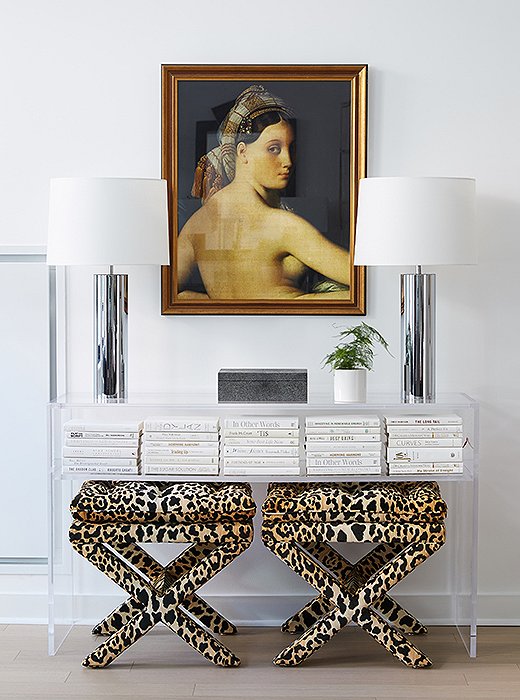
One pop of pattern is okay, but don’t go any further. Find the leopard-print ottomans here.
3. Clear the Clutter
Though you may love your great-uncle’s collection of gnomes on the mantel, it’s likely that buyers will feel quite the opposite. “Clear out the clutter, and keep the decor simple by creating deliberate vignettes to foster imagination,” Lauren advises. “Whether it’s a reading nook with a throw or a thoughtfully curated bookshelf, you want to create moments that enable people to picture themselves living there.”
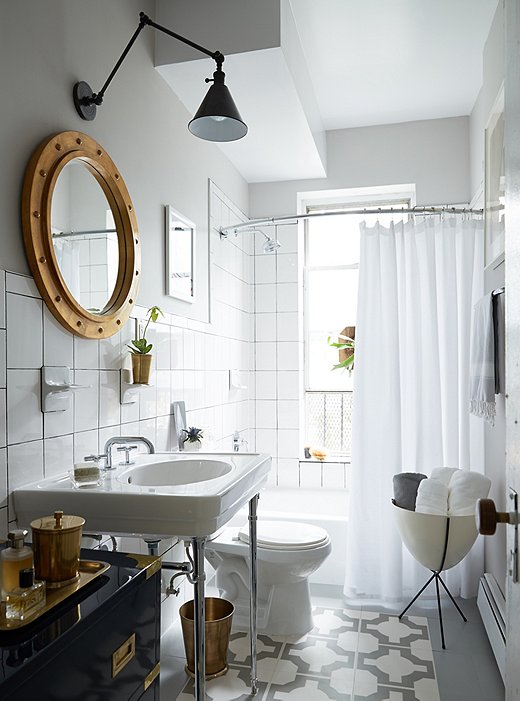
Make an old bathroom feel like new again with a white shower curtain and fresh grout. (Click here for a step-by-step how-to).

Flank a mirror with contemporary sconces to attract buyers’ eyes.
4. Switch It Out
“Additional small improvements to consider are switching out the hardware on the cabinetry, replacing light fixtures, or adding a fresh shower curtain and bath linens to make an older bathroom more attractive,” says Thijs. All things easily accomplished in five minutes or less, they may help you score exactly the price you’re asking for.
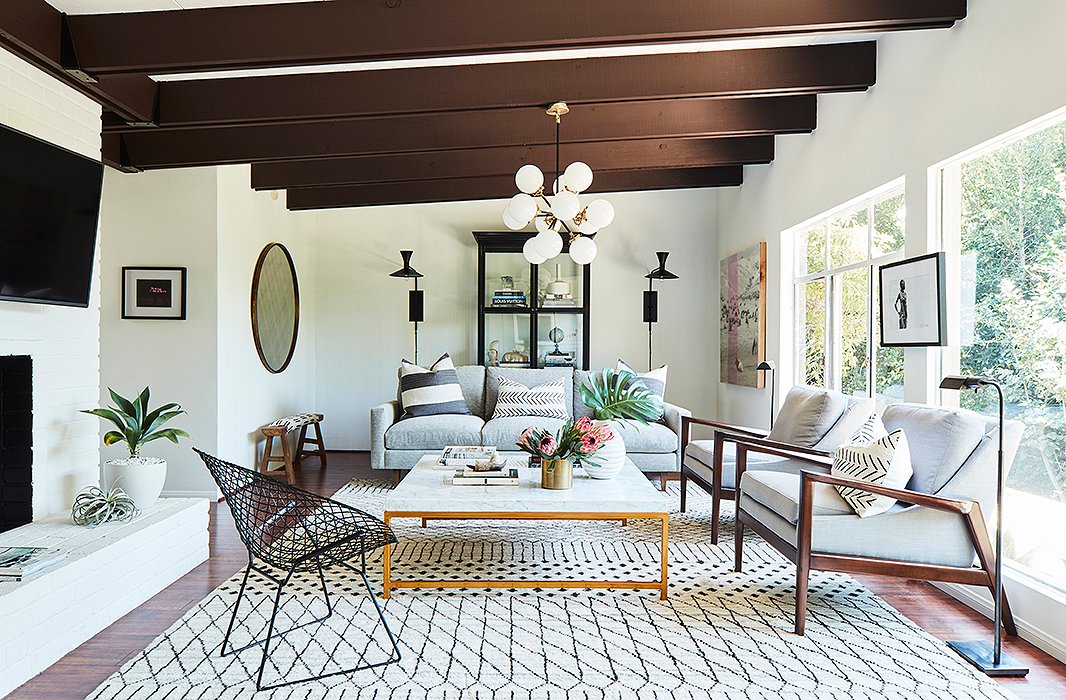
Streamline your furniture arrangement in the interest of spatial flow.
5. Keep the Flow
You want every room to read as if it’s open plan. Superfluous furniture should be removed “so buyers don’t have to bob and weave,” says Lauren. Similarly, Thijs suggests replacing bulkier pieces in favor of those with clean lines and a lighter weight. This, he says “will create a clear purpose for each room, so the buyer can fill in the gaps with regard to their personal taste.”

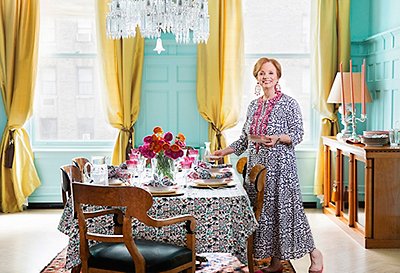

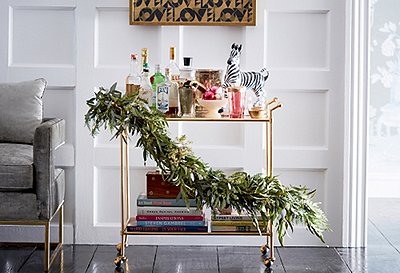
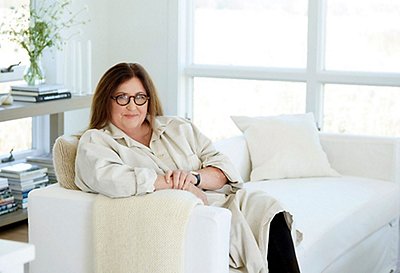

Join the Discussion